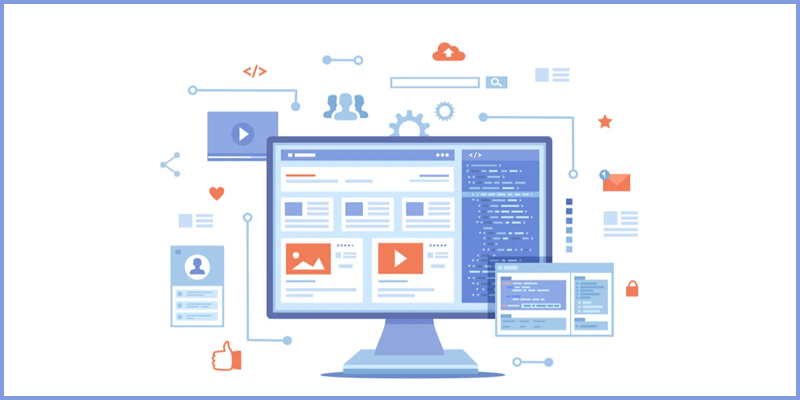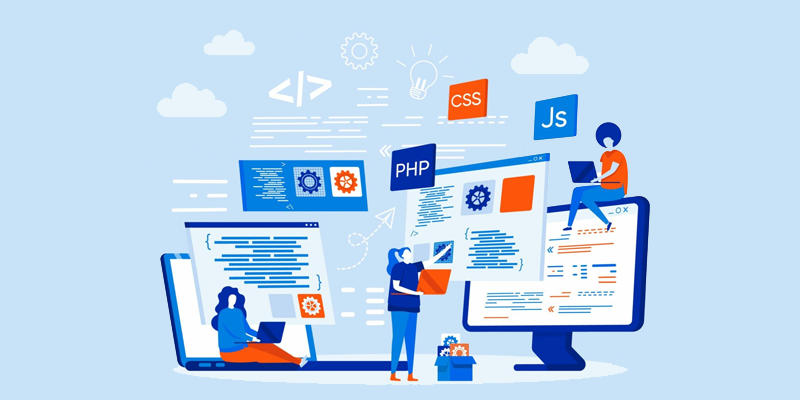We can all be more productive. There are many options you can do to improve the way we work and the results of our activities. I can’t promise to solve all your productivity problems. Still, this blog can give you useful and solid tips on how to streamline your website design and development workflow and keep all parts of your development cycle moving quickly and smoothly. Almost 21,800 openings for web developers and logo designers are projected each year, on average.
Here we are going to discuss some useful tips and by following each of these tips, you’ll save time, produce more or better work, and become a more productive developer, ready to tackle your next task in half the time you used to. We can almost guarantee that.
-
Use a Website Development Framework


Use a Website Development Framework
Good frameworks for web development has features that provide solutions to common web development problems, such as default web page layouts, web form handling features, and browser compatibility fixes. It has been tested by many other web developers for bugs, security, and performance and promotes code reuse with a consistent API.
They have community developed extensions and tools that further enhance your development (for example, jQuery has many plugins for handling UI, images, web typography, etc.). Too often, we are forced to follow coding best practices and good programming design patterns blindly. Also, a development community of supporters and users who can reach out for help and collaboration. Beginners usually find it easy to get started.
All these advantages save time and improve the quality of your results. In just 18 years, the number of websites on the web increased from 17 million to over 1.6 billion in 2018. There are different types of website development frameworks that can be adopted.
A common drawback of using web development frameworks is that they always come with extra features that you don’t use. These extras can slow down your site’s speed and performance through code bloat, so you should make sure that the benefits of using these frameworks outweigh any potential performance impact. This is especially true for newbies, but framework code is written using best coding practices and design patterns, reviewed by many talented and passionate developers, and often better than it also creates faster and more secure code. Compared to what the average logo designer and web developer could create on their own.
-
Build a Library of Code Snippets


Recycle your code! Create a collection of your favorite or frequently used snippets and make sure they are easily searchable and well organized.
In the simplest way, you can create a folder/directory on your hard drive containing your source code and text files. However, this may not be an efficient technique. One step to do that is to use a source code editor allows you to save snippets.
Dreamweaver has a built-in snippets panel, and it even comes with ready-to-use code snippets.
Another way to solve the problem is to use a dedicated snippet tool like Snipplr.
Here Are Some Ideas:
You can also use a private code repository/version control system like Git to have more control over your source code. This also lets you go back to older versions of snippets and see how they’ve evolved throughout your career. The collection of code snippets spans several different languages and is used constantly for repetitive tasks like inserting new CSS3 rules using browser prefixes. Functions that are often forgotten to use are also useful.
When choosing a method for collecting snippets, make sure it has the following time-saving features:
- Search
- Hierarchical structure for easy categorization of snippets
- Syntax highlighting to improve readability
- In a perfect world, it would be (or could be) built into the source code editor to reduce switching between applications.
Remember to review, improve, and update existing snippets regularly.
-
Use the Right Tools


This is a simple matter. Make sure you have good tools and know how to use them effectively. If you’re a web and logo designer or running a website development company, you probably need Photoshop and Illustrator. If you’re a developer, you need to choose the right web development apps to help you get your job done. Of course, toolsets vary from profession to profession and from person to person. Not everyone needs his Coda web development suite to build a website – some just need a terminal.
The key is to make sure the tool gets the website development services job done as efficiently as possible.
-
Collect and Organize Free Design Resources


There are various sites on internet that offer design materials for free. Consider these sites to your RSS reader and find out whenever they post a giveaway you might be able to use like, PSD templates, vector illustrations, Creative Commons licensed images and graphics, buttons, GUI elements, Photoshop brushes, @font-face kits, and all sorts of other designs. There is a huge library of elements. Such a large library makes it incredibly easy to create a mockup in Photoshop or prepare a quick sketch to show to a client.
-
Work in Sprints


Working in sprints can greatly increase your productivity. Working in 10- to 20-minute chunks gives your brain time to generate new ideas and prevents burnout. Do not work for hours at a time. The pace slows down, and the quality of work deteriorates over time. Working on a project in short intervals allows you to always come back to a fresh state.
-
Take a Break


The most important part of sprint-based work is rest. Use these breaks to disconnect from your workspace. Go outside and stretch, or if you’re lucky enough to be a work-from-home freelancer, head to the kitchen to pack some snacks.
Again, no need to track time if you don’t need to. Sprints don’t have to be exactly 15 minutes, and breaks don’t have to be exactly 5 minutes. Work until you get a good stopping point, then take a break at a comfortable time. Fine-grained time management only leads to more procrastination. However, some developers may prefer to use more structure.
-
Invest Time in Learning
In the short term, it takes time to constantly learn, keep up with industry news, and stay ahead of the curve. However, the idea is that investing time in self-improvement can save time, increase output, and improve the quality of work in the long run.
-
Don’t Over Plan
Don’t make your day more rigid than it needs to be. The mind needs some flexibility and time to breathe and think. Please be prepared to change your schedule. Over-planning your day only leads to procrastination and even more despair as you watch your knots of productivity wear away.
-
Don’t Jump Out Of Your Head
This is the opposite of over-planning. Don’t over Plan. But don’t fall short of your Plan. Jumping in without knowing what to do can lead to a disastrous website project.
Whenever you start working on a project, make sure you know what is expected of you. A web design project can be anything from what you want the website to do, to the content of the landing page, to the client’s set of colors. Before you start working on the client side, you always have:
- Color scheme
- The goal of the site
- All the content they can offer
- Design ideas you already have
If you know certain things about your project, you can be on the right track without knowing what your client wants.
-
Don’t Complicate Things
This is probably the most important thing. Don’t overcomplicate your work. Don’t do more than necessary. Also, don’t take on too much work in a given period of time. We don’t always recommend giving customers the lowest performance, but you don’t have to give the highest performance. There are no clear guidelines here, so you’ll have to decide on a case-by-case basis. Give your customers what they need. Nothing more, nothing less.
Also, don’t overcomplicate your productivity strategy. Keep things simple.
Conclusion
Implementing the above strategy will take some time. Adopting a healthy productivity plan is a long process that requires consistency, resilience, commitment, and perseverance. Once you make it your habit, you will see a big difference.
Everyone has their own personality and work style. What works for one developer may fail completely for another. Hope this piece of writing helped you find the best approach for you and increase your productivity and efficiency. The benefits are numerous. Eligibility for new job opportunities, higher wages for providing quality work with less effort, improved work-life balance, and increased satisfaction within the company. Everyone is different and needs their own process to get things done. But keep the above tips in mind. Hopefully, your workflow will be more streamlined than before. If you need further guidance, contact one of the best logo design companies in the UK, Logo Designs Company.



